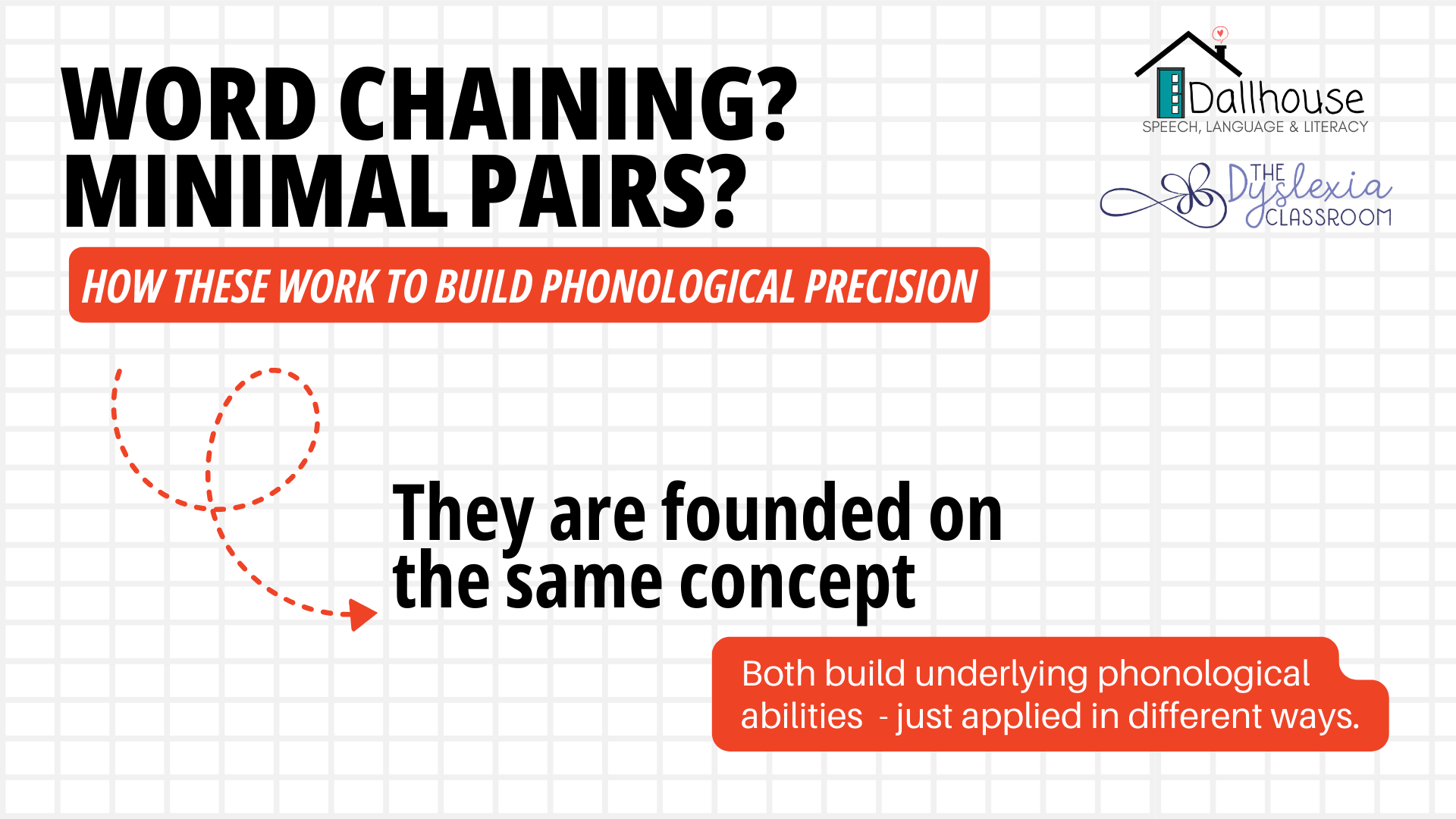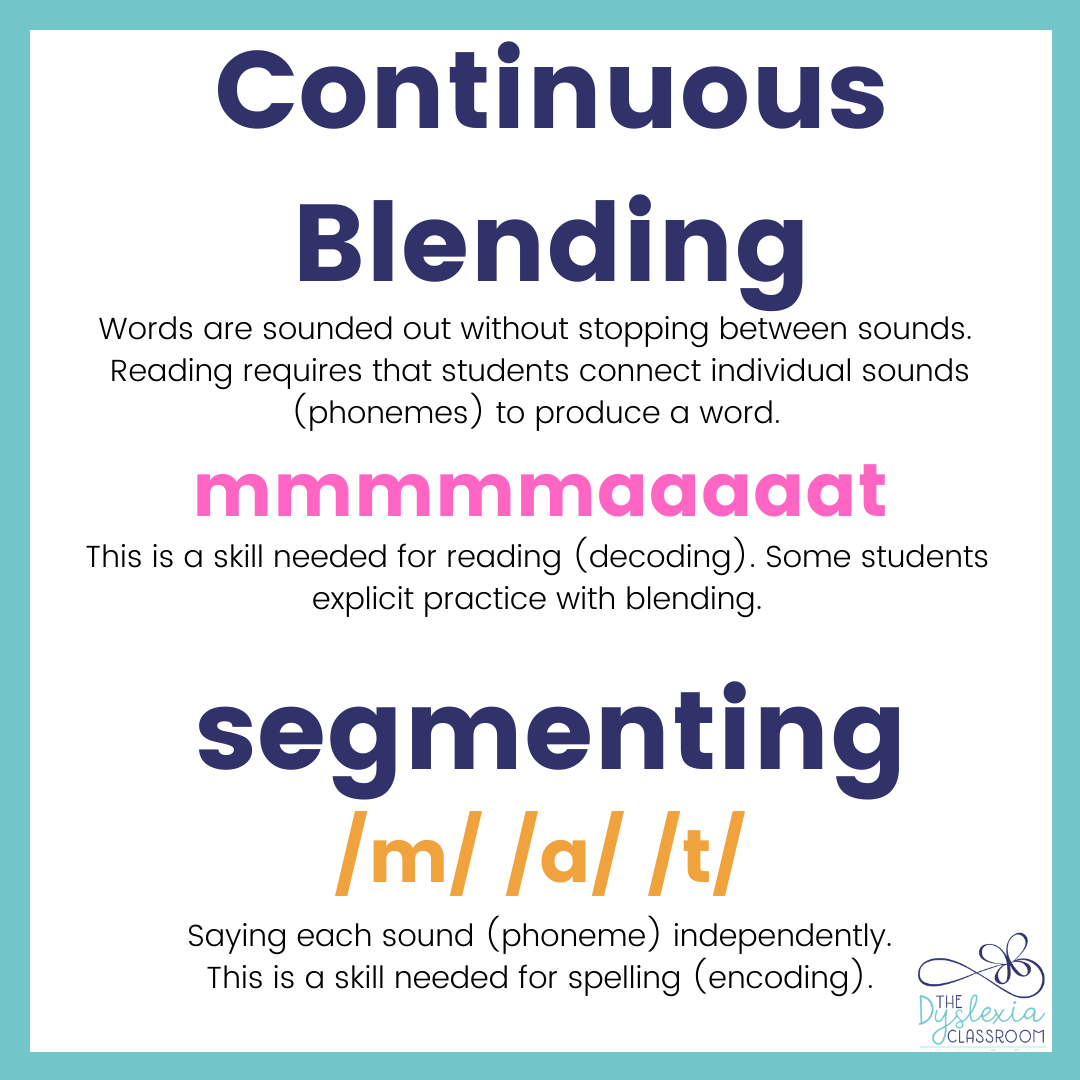From Minimal Pairs to Word Chains: The Speech-Literacy Connection We Can't Ignore
Co-Written by Leanne Dall, MHSc., CCC-SLP, and Casey Harrison, LDT, CSLDS, CALT
*free video link below*
Word chaining has been around for decades, but there's a renewed spotlight on why it's so powerful, especially in the early stages of reading and spelling development. A word chain is essentially a sequence of minimal pairs that we use to improve reading and spelling by focusing on how sounds (phonemes) and letters (graphemes) work together to form words. As we've been reflecting on its impact in light of our newly released CVC Links & Ladders Word Chaining Deck, one truth keeps resurfacing:
Word chaining and minimal pair work share the same phonological roots.

And when we recognize this, our instruction becomes more efficient, more aligned, and more effective.
The Speech–Literacy Link: Why Contrastive Pairs Matter
In speech therapy, SLPs may rely on contrastive phonological approaches, such as minimal and maximal pairs, to spark phonological learning. The minimal pair appro...
Stuck On Decoding: 5 Ways To Scaffold Instruction

Have you ever had a student that struggles with blending words or over-emphasizes the strategy of letter-by-letter decoding? Or a student who segments, or pulls apart, individual sounds in words but cannot blend them to read the word? What can you do to move a student forward?
It can be incredibly frustrating for the student who can isolate the sounds - or decode letter-by-letter but then struggles to bring that knowledge together to read the word.
Dyslexic students learning to read need more instructional time and practice addressing decoding and spelling applications, but what happens when students get stuck on letter-by-letter decoding? Are there scaffolds we can use to move them to fluent reading?
What is Scaffolding in Instruction?
Scaffolding is integral to working with diverse learners and those with dyslexia. It is an instructional strategy in which learning is broken into smaller chunks, providing a tool, structure, or strategy to help students grasp new materials or con...
Why You Should Analyze Your ABC Chart

When we think of classrooms, we almost always envision an alphabet with pictures posted somewhere in the room. We may not realize that the keywords or images used in alphabet posters and books matter - a lot more than you may think! Many cute and colorful alphabet posters are available, and we may gravitate toward what is aesthetically pleasing, but these are not the best choices for our students and classrooms.
Analyzing Our ABC Charts - Why It Matters
Reading is the ability to connect spoken sounds to their letter representations. We want students to elicit the smallest unit of spoken sound, or phoneme, in its purest form. For this reason, being mindful of keywords is essential.
What does this mean? The ability to segment phonemes (sounds) into their smallest units and then blend those sounds into words is what is needed to read and spell. Keywords or pictures we choose to link to graphemes (letter/s) need to connect directly to the individual phoneme (sound).
In English, soun...
Learning Through Sand Play
This is part 2 of the Learning At The Beach series. Click HERE to read part 1.
We made it back home from our fun-filled week at the beach with buckets of shells and happy hearts. 🌊 While it was a week full of fun, we also snuck in some learning. Last week, I shared how we played activities like "Beat the Wave" and "Sandy Sound Dictation." This week, I'm sharing some more activities that we played in the sand as part 2 of the mini-series, Learning at the beach.
One of the powerful reminders for us as parents and educators is that it is possible to play with a purpose. Playful learning can set the stage for enjoyable interactions, reduce the stress sometimes associated with reading, and engage students in reading tasks while still focusing on a learning objective. Here are some additional games/activities that we played at the beach. Whether you are headed to the beach this summer or spending it at home or elsewhere, you can certainly bring these activities into your day.
Learning...
Ways to Learn at the Beach
Each year to kick off summer break, I take my three little girls to the beach. They can spend hours playing in the waves and running along the sandy shores. This year they have tackled boogie-boarding, and I foresee some surf lessons in the future!
As a mom and teacher, I am always looking to weave playful learning into our day. Our beach week is no exception! My girls love to play little reading games in the sand. I keep them short and sweet, which keeps them engaged and playful. We played so many different games that I may need to break it up into a 2-part blog post!
Here are just a few of our favorites to play to review and practice some of our reading skills.
- Letter writing in the sand. I have found that students of all ages love to play with sand. Sand provides kinesthetic practice for pre-writing letter formation and letter practice. The drag, or pull, in the sand helps build connections for the learner through what we refer to as multisensory practice or when we are enga...
Strategies for Teaching Continuous Blending
Hi, friends. This week, the blog post is going to be slightly different. I've included a short video that will help you with the subject matter I'm chatting about with you this week.
Have you thought about how you can help students that know individual sounds but can't seem to put them together? Or, if they put them together, they drop sounds when blending?
Teaching continuous blending is a great strategy to help students connect sounds with decoding. Students that struggle with holding individual speech sounds with their phonological memory benefit from this instruction. Next, let's talk a little about continuous blending.

What is Continuous Blending?
Continuous blending is when words are sounded out without stopping between sounds. I model this in the video. Reading requires that students connect individual sounds (phonemes) to produce a word.
Why is this important? This is a skill needed for reading (decoding). You may find that some students need explicit practice with bl...



